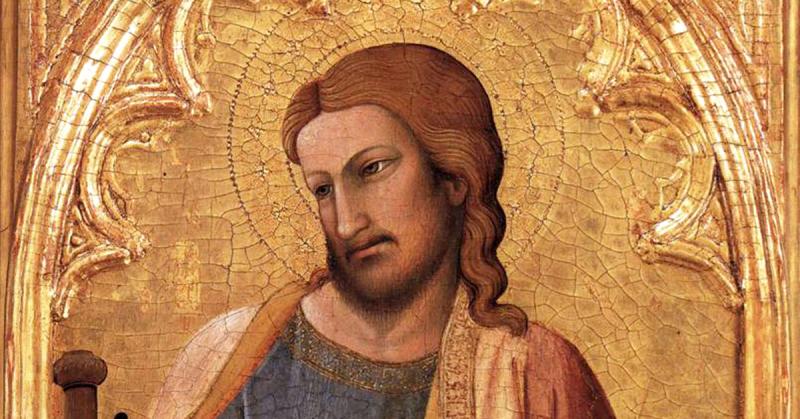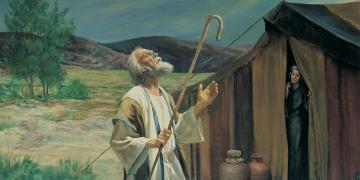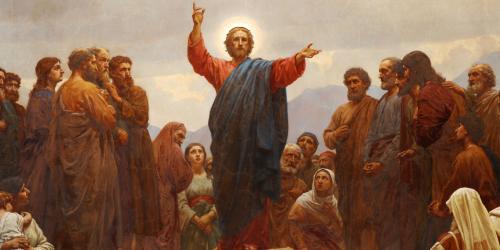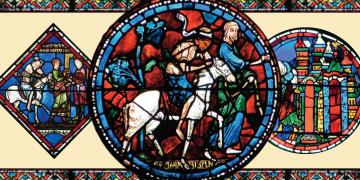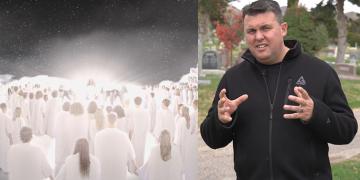You are here
Book of Mormon Central is in the process of migrating to our new Scripture Central website.
We ask for your patience during this transition. Over the coming weeks, all pages of bookofmormoncentral.org will be redirected to their corresponding page on scripturecentral.org, resulting in minimal disruption.
As readers study the Epistle of James in the New Testament, they may be surprised to learn that James, often called the “Just” and the First Bishop of Jerusalem, references Jesus’s Sermon on the Mount no less than twelve times in his letter.1 It may not seem so surprising when they consider the fact that this James is understood to be Jesus’s half-brother (Matthew 13:55; Galatians 1:19) and would have likely been highly familiar with Jesus’s teachings and deeply invested in sharing His words. The presence of parts of the Sermon on the Mount in the Epistle of James helps answer important questions regarding the nature and age of Jesus’s famous sermon, as well as its level of importance to early Christians. It also helps readers understand some of James’s own goals as he wrote to the members of the Church in his day.
The Sermon on the Mount has been the subject of much debate among biblical scholars. As BYU Professor John W. Welch stated the question: “What was the original function or purpose of this text? Does it have a unifying coherence, or is it a scrapbook of disjointed sayings?”2 Although many scholars have argued for the latter, Welch’s book, The Sermon on the Mount in the Light of the Temple, lays out a persuasive argument for its authenticity as a unified text that predates the Gospels, that came from Jesus Himself, and which had a specific instructive purpose. The fact that the Sermon shows up so many times in James––as it also does in 1 Peter, Romans, and elsewhere––can best be explained by the assertion that the Sermon predates these texts and not that it is somehow dependent on them.
Professor Welch explained that “the verbiage and echoes of the Sermon on the Mount found elsewhere in the New Testament would not only mean that parts of the Sermon on the Mount were also pre-Petrine, pre-Jamesian, and even pre-Pauline, but also (because these quotations and echoes come from every part of the Sermon on the Mount) that the Sermon had become coin of the realm at a very early stage in the first few decades of Christianity.”3
Returning to James specifically, note that Welch declared, “No text is more important or has had more influence on the history and character of Christianity than the Sermon on the Mount.”4 So, what kind of influence did the Sermon on the Mount have on the Epistle of James? James seems to draw on passages from the Sermon on the Mount that have practical, ethical applications.5
Compare the following examples6 from James with phrases in Matthew 5–7:
- James 1:12: “Blessed is the man that endureth temptation: for when he is tried he shall receive the crown of life”—James uses the same format as Jesus’s beatitudes.
- James 2:13: “Judgment without mercy” shall be given to him “that hath shewed no mercy”—this is essentially the opposite, in reverse order, of Jesus’s promise that the merciful would be given mercy (cf. Matthew 5:7).
- James 1:19–29: James warns brothers to be slow to anger—this follows Jesus’s warning that brothers who are angry with each other are in danger of judgment (cf. Matthew 5:22).
- James 5:12: A warning to not swear oaths by heaven or earth, but only by yes or no—the only two places this is mentioned in the New Testament are here and Matthew 5:33–37.
- James 1:4; 3:2: James talks about becoming perfect using the same adjective, teleioi, that is used in Matthew 5:48.
- James 1:13: James’s explanation that God does not tempt anyone may be a clarification of the line from the Lord’s Prayer in Matthew 6:13 asking God to “lead us not into temptation.”
- James 4:11: James warns against speaking evil of and judging your brother—compare this to Jesus’s teaching regarding judging your brother in Matthew 7:1–2.
- James 1:5–6: Similar to Matthew 7:7, this passage exhorts readers to ask of God, promising that God will give to those who ask.
- James 1:17: Similar to Matthew 7:11, James speaks of good gifts that come down from the Father.
As Welch noted, although “some of these words appear elsewhere in the New Testament, the density of words, phrases, ideas, and strong teachings used by James and found in the Sermon on the Mount show that these two texts are closely associated with each other.”
Stepping back to look at the significance of the apparent relationship between these texts, it seems appropriate that James would honor the words of the Savior (his half-brother) in this way. James demonstrated his love for Jesus by letting His words “abide” in him (John 15:7) and fearlessly preaching those words to the world. He wanted the members of the Church in Jerusalem, and all people, to understand well the key principles taught by Jesus and understand the importance of living those teachings.
Related Articles
- 1. John W. Welch, “The Temple, the Sermon on the Mount, and the Gospel of Matthew,” in Mormonism and the Temple: Examining an Ancient Religious Tradition (Provo, UT: BYU Studies, 2013), 91.
- 2. Welch, The Sermon on the Mount in the Light of the Temple (Surrey: Ashgate, 2009), 2.
- 3. Welch, “The Temple,” 91.
- 4. Welch, “The Temple,” 64.
- 5. Welch, “The Temple,” 96.
- 6. NB: This is not a full list of parallels between James and the Sermon on the Mount. For a more extensive list, see Welch, “The Temple,” 96–97.
Subscribe
Get the latest updates on Book of Mormon topics and research for free


